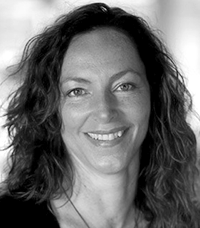Change, revamp, adapt, transform, reorganise, restructure, refine, redeploy, diversify, offshore, transform, disrupt = change fatigue! Groan! Or not…it depends on our mindset. It is easier to get your head around change for improvement but what about when change needs to be different and better too? We are living in a VUCA world. Things are complex; the solutions to some problems we face today are yet to be discovered.
There is less polarity of either/or. We are in a place of both, and we need to have both stability and change, not either stability or change.
Unfortunately, the downside is how the vast majority of workplace change is often viewed – as something hard, painful, threatening. And this goes right to the fundamentals of how our brains create meaning and identify risks in the outside world. Future – Fit leaders need to become competent & confident at leading change.
There Is Never Just One Change!
Change is heavy on the agenda with unresolved change from the past still spilling over onto future change rollouts and the operationalising of the current change agenda. We are constantly being faced (and exhausted) with the prospects of change.
And right now there is a perfect storm: globalisation, the pace of change and a wave of automation are operating in consort. Change no longer has a beginning and an end – it is ongoing and uncertain. There is no such thing as getting back to normal. We change and effect change all the time. Why is it that we can’t translate this to the work environment?
Leaders underestimating the impact of automation will face some serious challenges if they don’t become life-long learners and advocates of change. Automation in its various forms is likely to take over around 45% of current jobs within 10 years. That doesn’t necessarily mean widespread unemployment. It does mean finding innovative solutions, ongoing learning and re-skilling.
According to Psych Press Australia this month, 90% of CEOs have stated that their organisations are facing digital disruption yet 70% of them said their organisations don’t have the skills to adapt. Scary!
Everyone thinks of changing the world, but no one thinks of changing himself.
Leo Tolstoy
Here Are 4 Of Our Current Problems With Change
- Our brain physiological response is threat sensitive and prefers the status quo.
Besides our hardwiring, which is our habitual non-conscious, effortless thinking just mentioned, we also have the impacts of cognitive dissonance to deal with and our error detector which instinctively creates a threat response and then needs to be overridden by our logical brain.
- Our past experiences of change are negative.
Most of us have had poor experiences of change. Either where we felt we had no control, where we did not believe in the change or couldn’t see the reason for the change and where we seemingly came out worse off because of a change. Those negative experiences are the ones we remember most clearly. Our brain is wired to remember experiences with high emotion the most so that we learn and adapt.
- We are sensitive to others response to change.
We also have to manage other people’s response to change! We may change first and get push back from others who struggle to maintain the equilibrium. They also may not have the mindset, information or be at the stage that we are in the change cycle so it can feel like they are getting in the way.
- Our organisational change management is not fit for purpose.
Change methodologies are traditionally focused on the process vs. the people side of change. Enlisting people in change and working with the human change process through uncertainties, fears and distractions will keep people more committed and engaged. Responsibility for change has often been devolved to the communications team, or to HR and treated as an event. In our view it is an integral ongoing leadership role.
So What Can We Do As Leaders?
In ourselves:
- Change is a cognitively expensive process so we need to hardwire new ways of being and doing as quickly as possible. We can do this by positive reinforcement, repetition and attention. When we can see possibilities and learn from new challenges we transform more successfully. This is about fostering a growth mindset and looking for challenge and learning.
- We can reframe change to see the benefits. Do we ever think of going on holiday as a change? We are happy with trying out a new restaurant, or travel to new places or look forward to new life events or adapting to new fashion trends, new apps on our new phones. Our brain may treat uncertainty as a threat, but it often treats novelty as a reward so how can we tap into that more?
Our brains are designed to adapt constantly so we can rethink how we see change.We need to see the benefits in change – the possible growth, sense of achievement, increased resilience, opportunity for small wins, greater confidence, improved managing uncertainty, greater perspectives, more innovation and more solutions to problems.
- Role model the behaviours we want displayed. This along with systems will help the culture to align with the transformation vision. Leaders must shift their own mindset to see the benefits of the change, commit to it and fully participate. Their behaviour needs to overtly model the changes they are asking of others in the organisation.
This requires self-awareness, the will to self-reflect and then to change to a more collaborative, adaptive, innovative and personally effective style. A way of working that engages diverse talent and where leadership services, facilitates and supports. This has to be a priority for leaders as role modelling is one of the greatest catalysts for organisational change. Seeing your leader change in ways that are aligned with the future allows and encourages others to do the same. Walk always beats talk!
In others:
- Communication is key - Consistent communication, even when there is no new news, increases certainty. Unknowns trigger our threat response even more than a known negative outcome. Get buy in and information by talking with stakeholders from the start. Link to the relevance of the change and the meaning for those involved. Without sufficient information we risk lack of buy-in which is often incorrectly seen as resistance.
Yet it may simply be a lack of understanding. Leaders forget that they have been thinking through the process for a while, and yet it is brand new to those who are about to receive the message. Reverting to ‘beginners mind’ can be helpful to put yourself in the shoes of those you are communicating with.
- Build a culture of trust - this is a critical pillar for leading change as it drives engagement, retention, performance and innovation. Employees working in high performing organisations see their leaders as highly trustworthy. A (trust) culture that is open-minded, embraces change and is agile will be more effective. Remember that culture is the collective mindset of an organisation.
- Value ongoing learning - Emphasise the importance on lifelong learning and development. Organisations can future-proof themselves by understanding how critical continuous learning is to business success. Rapid progress is key with the half-life of a learned skill now being only 5 years according to Deloitte Human Capital Trends (and that was published a few years ago now).
- Empower others - Teach people about how their brains work and empower them to understand and start to self moderate their own behaviours.
We may not have control over change, but neuroscience tells us that we can change the meaning we take from the outside world in order to have better control over our response to change. And as Leaders we can empower and support our colleagues to do the same thing.
Article Originally Published here.


No Comments Yet
Let us know what you think